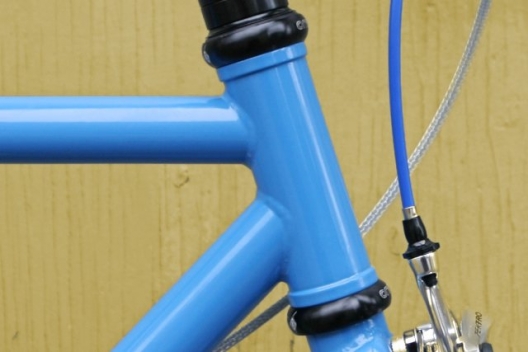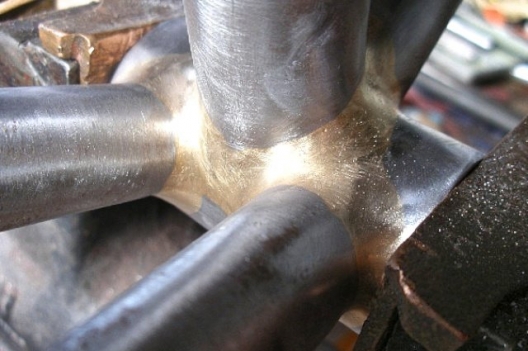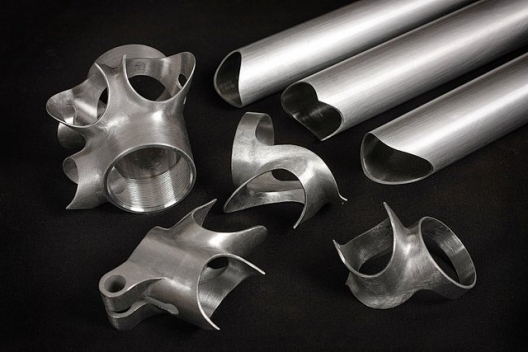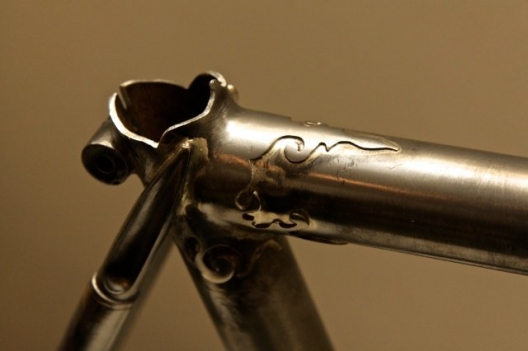Braze On, Braze Off, Connecting Joints on a Bike Frame
Mission Bicycle Company guest post
We often hear: “What’s better, a lugged frame or a welded frame?”

Frames can be built of many things: steel, aluminum, carbon, even cardboard. How the individual pieces are joined together depends on the material and the builder. For metal there are two primary methods and a lot of confusion about how they compare, or which is used for what, and why.
If you'll be talking shop or bike shopping read on for our Oversimplified guide to brazing and welding.
What is brazing?
A filler metal (like brass or silver) is heated just above its melting point and distributed over two adjacent tubes. As the filler metal cools it hardens and forms a joint connecting the metals.
Brazing uses a filler metal with a melting temperature lower than the frame material. So the filler melts to connect the tubes, but the tubes themselves don't get hot enough to change. It's a bit like gluing two pieces of paper together. The papers don't change but are joined as one.
What is welding?
Welding differs in that it actually melts the filler metal and the frame material so when cooled all three have coalesced into one solid.
Think of an ice cube that's just starting to melt. The surface of the cube is covered in liquid water, but the structure of the cube is still intact. Welding creates a pool of material (filler + tube + tube) but doesn't compromise the tube shape.
What's on the street?
TIG Welding

Above is a Mission frame made of 4130 chromoly steel that's been TIG (tungsten inert gas) welded. What you're seeing is raw steel tubing with a clear gloss powder coat.

Another Mission, powder coated blue. TIG welded joints are the most common type today, found on lots of bikes and lots of styles.
Fillet Brazing

Above is the bottom bracket shell of a frame that's been fillet (pronounced "fill-it") brazed. The gold stuff is brass fillet joining the steel tubing. Fillet is usually applied thick, and then sanded smooth for a sculpted look.

Here's the same bottom bracket shell polished smooth. Photos by Dan Polito.
Lugged Brazing

Lugs and pic by Phil Gradwell.
Last we've got a frame that's been joined by fitting each tube inside a sleeve called a lug. Lugged construction is often mischaracterized as separate from the two methods above, but it is in fact also brazing.

Hand cut lug by Eman Eng.
Which one is better?
Neither. Both. It depends on the objective. Different methods offer different attributes. Aluminum can't be brazed, lugs are more expensive, and welding isn't ideal for small stuff.
With modern materials and skilled fabricators there's no functional difference. When done right, both welding and brazing are stronger than the metals they're joining, meaning the tube should fail before the joint. For most it's a question of aesthetics and price. What do you like, how much do you have to spend?
What about us?
Our frames are TIG welded and fillet brazed. The main tube joints that make up each triangle are welded but some of the smaller joints, like the brake bridge, are fillet brazed.

Our eyes are forward, not backwards. Lugs can be beautiful but our preference is for a modern, minimal aesthetic over ornate and vintage.
Next time the topic of joints comes up, pass the knowledge along.
P.S. Need a refresher on frame materials? Keep learning with our Oversimplified Guide: Steel vs. Aluminum.
